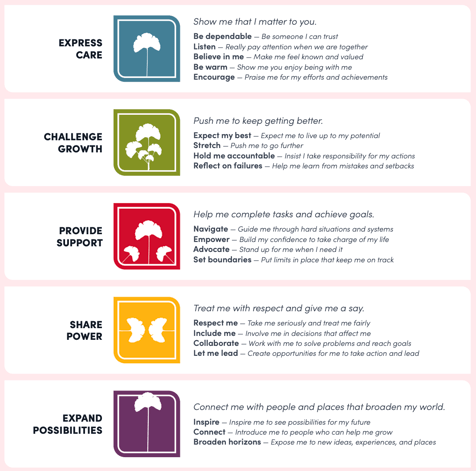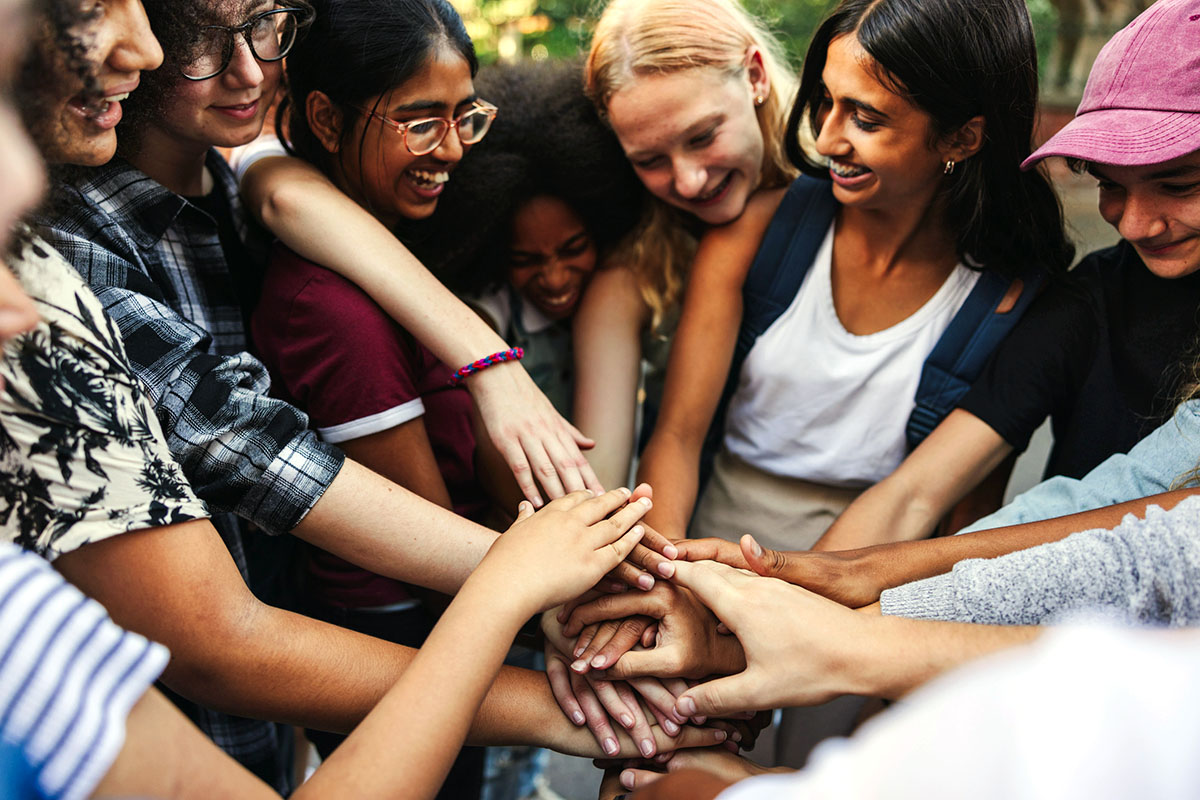Blog
Extending a Developmental Relationships Perspective to Young People’s Online Experiences
Young people do not exist in isolation. Their development is intrinsically tied to the relationships that surround them in families, schools, and communities—including online communities.
For many adolescents growing up in the digital age—sometimes called digital natives—online interactions have become a staple of their social and emotional lives, which can have both positive and negative effects.
As adults and practitioners, how can we better understand young people’s online interactions and guide them to content, platforms, and interactions that will help facilitate their positive growth?
A recent article published in the Journal of the Association for Consumer Research written in collaboration between Search Institute’s Katherine Ross, Ph.D., and Benjamin Houltberg, Ph.D., and USC Associate Professor of Clinical Marketing Arianna Uhalde, Ph.D., begins to explore these ideas by reviewing what we know to date and proposing ways to apply the Developmental Relationships Framework to online engagement and content development.
Beneficial or Harmful?
A 2023 health advisory from the American Psychological Association (APA) on social media use in adolescence drives home the power of digital relationships in young people’s lives.
The organization’s conclusion is that social media can be a positive or negative force in adolescents’ lives, depending on the contexts they live in and the content they interact with. “Using social media is not inherently beneficial or harmful to young people,” the APA writes. “Adolescents’ experiences online are affected by both 1) how they shape their own social media experiences (e.g., they choose whom to like and follow); and 2) both visible and unknown features built into social media platforms.”
There is a need for more focused research, supports, and opportunities about and with digital communities to uplift the benefits and minimize harm—in other words, to best support developmental relationships and positive youth development in the digital age.
Young People Are Online “Almost Constantly”
A 2022 study written by Emily A. Vogels and published by the Pew Research Center showed that 97% of U.S. teens report using the internet every day, and 46% say they are online “almost constantly.” Young people are engaging with content on YouTube, TikTok, Snapchat, Instagram, and Facebook. In addition,
- 95% of teens in the U.S. have smartphones
- 90% use a desktop or laptop computer
- 80% have access to a gaming console
The frequency and depth of these online engagements require a full understanding of how they affect young people’s development and how they can be optimized to support developmental relationships.
Types of Online Relationships
Young people engage in three main types of relationships online.
- Offline/online hybrid relationships where the people know each other “in real life” and interact digitally. These relationships can involve peers, family members, teachers, coworkers, school staff, coaches, and teammates.
- Online-only relationships that involve two-way interactions, such as directly messaging someone online whom they don’t know, corresponding in an online community, or communication between an adolescent and an online influencer.
- Online parasocial relationships that exist only online and are one-sided, such as engaging with content posted by celebrities or brands.
Adolescent psychologists are engaged in a continuous examination of the impact of these social experiences. Clearly, some harm occurs during these online interactions. For example, Vogels’ Pew Research Center report states, “Nearly half of U.S. teens have been bullied or harassed online, with physical appearance being seen as a relatively common reason why. Older teen girls are especially likely to report being targeted by online abuse overall and because of their appearance.“
However, new research is revealing the positive developmental effects of online engagement, including “cultures of care” for LGBTQIA youth.
The fact is, online relationships are here to stay, and today’s digitally savvy youth are going to continue to have online connections with peers, strangers, and brands.
We suggest extending a positive youth development approach to include these important online and hybrid online/personal relationships.
The Importance of Developmental Relationships
Search Institute’s primary focus in the last decade has been the developmental relationships that help young people discover who they are in relation to their communities. The Developmental Relationships Framework identifies five elements that make relationships powerful in adolescents’ lives: express care, challenge growth, provide support, share power, and expand possibilities.
Research and practice show us that young people who experience these elements from a web of caring adults are more likely to develop resilience and succeed in their schools, workplaces, and communities.
When the developmental relationships approach is applied to online activities and connection, it can provide a blueprint for guiding adolescents to positive, nurturing online interactions.
Positive Examples
Some organizations are seeing the value in this positive youth development approach to digital health.
- Susan Crown Exchange’s Thriving Youth in a Digital World provides resources for navigating the digital landscape. These tools and curricula were co-created by youth and provide models for engaging young people as researchers, content creators, and advisors.
- Along provides resources for educators to support young people as digital creators.
- Google’s Be Internet Awesome program provides lessons in digital literacy, responsible communication, and internet safety.
Search Institute’s contribution to this ongoing field of study includes sharing ways that a relationship-based framework can easily extend to online connections.
The Developmental Relationships Framework and Online Relationships
Search Institute created sets of guiding questions for adolescents and content creators that connect the five elements of the Developmental Relationships Framework to the digital world.
Content creators can consider the Developmental Relationships Framework to align content with adolescents’ developmental needs. For example, “when thinking about your content and its impact on young people: Am I connecting young people with people, places, ideas, and opportunities to broaden their world view?” (Expanding Possibilities)
Young people (and supportive adults) can start by asking themselves questions about the content and people they encounter online. For example, when adults share power with young people, they are treating them with respect and including their perspectives in decision-making. When it comes to online content, young people can ask, “Does this person or brand treat me respectfully and urge me to share my perspective?” (Sharing Power)
This framework provides new opportunities for young people to shape their identities and sense of self, whether online or offline.
Our Shared Digital Future
The adaptations educators were forced to make during the COVID-19 pandemic taught us new ways to understand and work with technology in our classrooms, programs, organizations, and communities.
The perils of social media and online content are well-documented and need to be taken seriously. However, instead of focusing solely on the dangers inherent in the digital landscape, we can benefit from framing these complex interactions using a positive youth development perspective.
Considering the developmental benefits of online content opens up possibilities for encouraging creators, brands, organizations, and communities to use the power of digital media to help young people learn, grow, and collaborate to lay the foundation for a healthy future.




